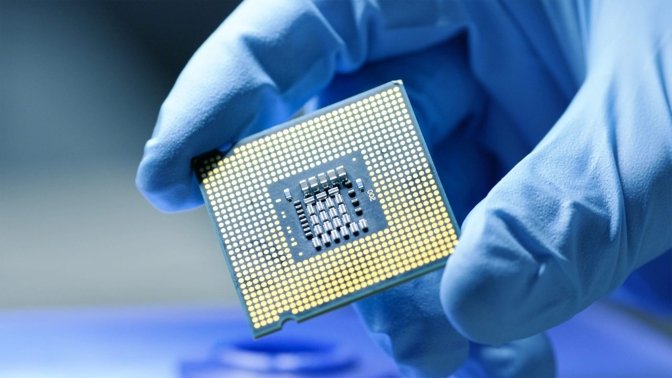Chip shortage, hoarding forcing record wait times for technology suppliers
A combination of the worldwide chip shortage and hoarding by manufacturers is creating a "danger zone," as processor lead times slip to the highest level since 2017.

Credit: AppleInsider
The global chip shortage, affecting firms from the automotive industry as well as general technology, has led to the longest lead times since the Susquehanna Financial Group started tracking it in 2017.
According to Bloomberg, the group says that the wait time between ordering a processor and having it delivered lengthened to 17 weeks in April. Before the start of 2021, it was more typically around 13 weeks.
Susquehanna report writer Chris Rolland said that this was an average across all industries, and that there are more extreme examples. Auto chip supplier NXP Semiconductors NV now has lead times of over 22 weeks, for instance.
And unspecified smaller companies, manufacturing headphones, have even seen lead times extent to a year. Reportedly, this has led to major redesigns and, in one case, a product being abandoned.
Bloomberg says that a lengthening lead time can mean that companies are buying up more processor capacity. They do it to protect against shortfalls, but this kind of hoarding can cause problems if a firm ends up with more inventory than it can sell.
"Elevated lead times often compel 'bad behavior' at customers, including inventory accumulation, safety stock building and double ordering," wrote Rolland in his report. "These trends may have spurred a semiconductor industry in the early stages of over-shipment above true customer demand."
Adding to the issue is that Taiwan is in the middle of a drought. The country is the base for Apple processor supplier TSMC, and the firm says it does not expect the drought to cause problems.
However, TSMC, and others, have been preparing for drought concerns by experimenting with ordering and delivering water to its facilities.
Stay on top of all Apple news right from your HomePod. Say, "Hey, Siri, play AppleInsider," and you'll get latest AppleInsider Podcast. Or ask your HomePod mini for "AppleInsider Daily" instead and you'll hear a fast update direct from our news team. And, if you're interested in Apple-centric home automation, say "Hey, Siri, play HomeKit Insider," and you'll be listening to our newest specialized podcast in moments.

Credit: AppleInsider
The global chip shortage, affecting firms from the automotive industry as well as general technology, has led to the longest lead times since the Susquehanna Financial Group started tracking it in 2017.
According to Bloomberg, the group says that the wait time between ordering a processor and having it delivered lengthened to 17 weeks in April. Before the start of 2021, it was more typically around 13 weeks.
Susquehanna report writer Chris Rolland said that this was an average across all industries, and that there are more extreme examples. Auto chip supplier NXP Semiconductors NV now has lead times of over 22 weeks, for instance.
And unspecified smaller companies, manufacturing headphones, have even seen lead times extent to a year. Reportedly, this has led to major redesigns and, in one case, a product being abandoned.
Bloomberg says that a lengthening lead time can mean that companies are buying up more processor capacity. They do it to protect against shortfalls, but this kind of hoarding can cause problems if a firm ends up with more inventory than it can sell.
"Elevated lead times often compel 'bad behavior' at customers, including inventory accumulation, safety stock building and double ordering," wrote Rolland in his report. "These trends may have spurred a semiconductor industry in the early stages of over-shipment above true customer demand."
Adding to the issue is that Taiwan is in the middle of a drought. The country is the base for Apple processor supplier TSMC, and the firm says it does not expect the drought to cause problems.
However, TSMC, and others, have been preparing for drought concerns by experimenting with ordering and delivering water to its facilities.
Stay on top of all Apple news right from your HomePod. Say, "Hey, Siri, play AppleInsider," and you'll get latest AppleInsider Podcast. Or ask your HomePod mini for "AppleInsider Daily" instead and you'll hear a fast update direct from our news team. And, if you're interested in Apple-centric home automation, say "Hey, Siri, play HomeKit Insider," and you'll be listening to our newest specialized podcast in moments.

Comments
In my opinion this is the result of decades of chasing cheap labor and the reason for that is refusal of U.S. citizens to pay higher prices for products manufactured domestically. It’s a Yin and Yang sort of thing.
China is the Google of countries. You can’t help people, they’ll take advantage of it.
There is a lot of over-engineered, unnecessarily complicated product. So many devices that should not be general purpose computers are actually that under the skin.
Additionally, we did not utilize JIT manufacturing methods. Instead, we worked as a traditional manufacturer with a parts store room. We kept a good supply of most electronic components in inventory - typically 1+ year (some obscure items we had 10+ years supply while other high volume components were just a few months). There have been other storms in the past which wreaked havoc with JIT manufacturers (the tantalum capacitor shortage which occurred around 2000 comes to mind). There certainly are advantages to JIT manufacturing, but when there is a hiccup in the supply chain your manufacturing ability can come to a screeching halt.
The loss of hi-tech manufacturing in this country saddens me, but I really don't see that changing anytime soon (if ever) - the reasons for it shifting overseas are manyfold, but in the end boils down to costs.